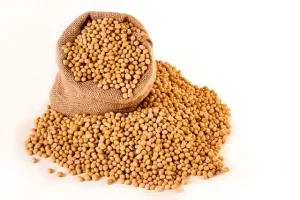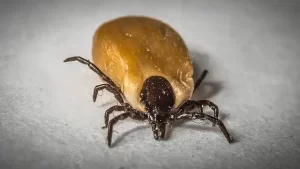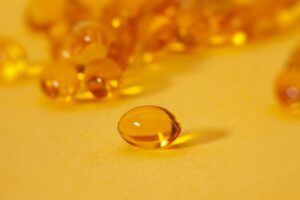Chinese COVID-19 vaccines are not so effective against COVID-19 and not suitable as booster shot.
- Engineered Soybeans with Pig Protein: A Promising Alternative or Pandora’s Dish?
- Severe Fever with Thrombocytopenia Syndrome (SFTS): A Tick-Borne Threat with High Mortality
- Why Isolating Bananas Extends Their Shelf Life?
- This common vitamin benefits the brain and prevents cognitive decline
- New report reveals Nestlé adding sugar to infant formula sold in poor countries
- Did Cloud Seeding Unleash a Deluge in Dubai?
Chinese COVID-19 vaccines are not so effective against COVID-19 and not suitable as booster shot.
- Red Yeast Rice Scare Grips Japan: Over 114 Hospitalized and 5 Deaths
- Long COVID Brain Fog: Blood-Brain Barrier Damage and Persistent Inflammation
- FDA has mandated a top-level black box warning for all marketed CAR-T therapies
- Can people with high blood pressure eat peanuts?
- What is the difference between dopamine and dobutamine?
- How long can the patient live after heart stent surgery?
Chinese COVID-19 vaccines are not so effective against COVID-19 and not suitable as booster shot.
Differences in the effects of different vaccines make many countries change their strategies
On April 18, local time, Brazilian Minister of Health Marcelo Queiroga announced that the use of SINOVAC inactivated vaccines will be limited to children and adolescents between the ages of 5 and 18, and will be removed from the National Adult Immunization Program.
According to Brazil’s “São Paulo” report, inactivated vaccines played an important role in the country’s COVID-19 vaccine vaccination plan in the early stage, and its vaccinations accounted for 85% by March 2021. However, it was gradually replaced by vaccines of other technical routes, and the proportion of vaccinations fell to less than 10% by the end of last year.
The same thing happened in Chile. Chile is also one of the countries that widely use SINOVAC inactivated vaccines. As of January 21, 2022 local time, more than 25.18 million doses of inactivated vaccines have been administered.
However, data from a recent study showed that among the more than 4 million people in Chile who received two shots of inactivated vaccine, only 4.5% of them chose the inactivated vaccine for the third shot.

Inactivated vaccines are less protective: Brazil replaces “vaccination regimen”
SINOVAC inactivated vaccine is the “pioneer” of Brazil’s anti-epidemic.
On January 17, 2021, the National Medicines Agency of Brazil approved the emergency use of SINOVAC inactivated vaccine, followed by a large-scale real-world study in the country’s Serana city.
The results released in May of the same year showed that after comprehensive vaccination with inactivated vaccines, the number of new local cases of COVID-19 dropped by 80%, the number of hospitalizations dropped by 86%, and the number of new deaths dropped by 95%.
But over time, there is evidence that the protective power of the two-shot inactivated vaccine has declined to a greater extent.
On March 30, scholars from several research institutions in Brazil and the United States released a large-scale real-world study on the preprint platform medRxiv, which included more than 2.6 million people in Brazil. Inactivated vaccine recipients:
The third shot is homologous booster with inactivated vaccine, the effectiveness of preventing COVID-19 infection after 8-59 days is 15%, and the effectiveness of preventing severe disease is 71.3%; while boosting with mRNA vaccine, the corresponding data are 56.8% and 85.5% respectively.
At the same time, the researchers also explored the extent to which the vaccine’s efficacy decayed.
Compared with two doses of inactivated vaccine, the relative effectiveness of the third dose of inactivated vaccine in preventing severe illness or death was 42% for 8-59 days, but it further decreased to 14.8% after three months.
In contrast, the protective effect of mRNA vaccine heterologous boosting was relatively stable, still 66.9% after three months.
From the perspective of humoral immunity, in another study, Brazilian scholars tested 1,205 people for antibody titers, and the results were published in the top journal The Lancet on February 5, 2022.
The primary inoculation of 2 doses of inactivated vaccine was also completed. Compared with the continued use of the third dose of inactivated vaccine, the neutralizing antibody titer of the mRNA vaccine or adenovirus vaccine booster group increased by 6.4-12.6 times. In the elderly group, the proportion rises further to 8-22 times.
Although the above-mentioned trials have many design limitations, and the absolute values of the results cannot be directly compared with other studies, the relative ratios within the trials still provide guidance for the vaccination regimen.
“Sao Paulo” said that in the face of Delta and Omicron variants, the effectiveness of inactivated vaccines is often lower than other types of mainstream vaccines, so the federal government and many states have subsequently excluded inactivated vaccines from new outside the vaccination schedule.
Singapore: Two doses of inactivated vaccine do not count as complete vaccination
Similar results appeared in large real-world studies in Singapore and Chile.
On April 12, Singaporean scholars published a paper on ” Clin Infect Dis ” . After analyzing the infection status of 2.7 million people after vaccination, the results showed:
- If the risk of COVID-19 infection after two doses of Pfizer mRNA is set as 1, the risks of Moderna mRNA-1273 vaccine, SINOPHARM inactivated vaccine and SINOPHARM inactivated vaccine are 0.84, 2.37 and 1.62 respectively;
- If the risk of severe infection with the COVID-19 after two doses of Pfizer mRNA is also set as 1, the risks of the other three groups are 0.42, 4.59, and 1.58, respectively.
This means that the two doses of Pfizer’s mRNA vaccine are assumed to have a 90% protection rate against severe COVID-19 cases, while mRNA-1273, CoronaVac, and BBIBP-CorV are 96% , 54%, and 84% protective, respectively, the researchers said.
 Comparison of the efficacy of the four vaccines
Comparison of the efficacy of the four vaccines
It is reported that from August 30, 2021, SINOPHARM inactivated vaccines are allowed to be used in private medical institutions in Singapore, and SINOVAC inactivated vaccines are still in the vaccine list of Singapore’s national immunization plan.
But as of November 30, 2021, only about 70,000 people in Singapore had received the inactivated vaccine. Due to the relatively low effectiveness, on December 2, 2021, the Ministry of Health of Singapore issued the “Reminder for Completing the Primary Series of Kexing COVID-19 Vaccines and SINOPHARM Group Vaccines”, strongly recommending:
People who have received two doses of inactivated vaccine should use mRNA vaccine for heterologous vaccination for the third dose, unless mRNA vaccine is not suitable for health reasons, such as allergies.
Shortly thereafter, the Singapore government issued a new policy stating that from 2022, people who have only received two doses of the inactivated vaccine will no longer be considered to have “completed the basic vaccination”.
Researchers in Chile also called for the decline in protection of inactivated vaccines to be more worrying because of the relatively low initial protective effect of the inactivated vaccine. For those who have completed two doses of inactivated vaccine, heterologous boosting with mRNA or other technical route vaccines should be preferred.
The study was published in The Lancet Global Health the day before yesterday (April 23) . The “medical community” once published yesterday in ” What is better for a booster shot after two shots of inactivated vaccine? Chile publishes real-world data on nearly 9 million people ,” the article reported:
The real-world research results of nearly 9 million people suggest that on the basis of two doses of inactivated vaccine, the third dose continues to be strengthened with the same source of inactivated vaccine, and the relative efficacy of preventing infection, preventing hospitalization, preventing severe disease, and preventing death are 63.8%, 59.3%, 71.2% and 62.7%.
When replaced with mRNA vaccine or adenovirus vaccine for heterologous boosting, the relative efficacy was 93.5%, 86.6%, 84.1%, 90.7% and 88.4%, 93%, 95.9%, 94.7%.
Experts suggest to use mRNA vaccine as the booster shot
A large number of research results around the world suggest that the protective effect that can be provided by simply relying on two doses of inactivated vaccines in the absence of “natural infection immunity” may not be enough to deal with the threat of future viruses.
Dr. Zhang, an associate professor of pathology and laboratory medicine research at the University of Pennsylvania, also previously said to the “medical community” that in terms of vaccine availability, inactivated vaccines have laid a “basic herd immunity” for the population. There is a choice, or a better vaccine should be vaccinated as a booster, and the introduction or acceleration of the development of mRNA vaccines is “urgent” whether it is for the purpose of alleviating the current epidemic or laying out the future.
“The key to building a vaccine defense line is that the vaccine must be able to stimulate a diverse immune response. Both mRNA vaccines and viral vector vaccines have very good efficacy, not only stimulating antibodies, but also inducing cellular immunity to better prevent severe illness and death. “In contrast, inactivated vaccines are less effective,” said a German virologist and professor at the Institute of Virology at Essen University School of Medicine.
Judging from the vaccination programs in Brazil and Chile, after a large number of inactivated vaccines were previously inoculated, the local government also recommended the use of other technical route vaccines for booster vaccination. According to Airfinity, a health data analysis company, Indonesia and Pakistan are also the largest recipients of inactivated vaccines, but the number of boosters with inactivated vaccines is much smaller.
The adjustment of these real-world vaccination programs and the relevant data of the trial should also provide a certain degree of advice and guidance for the follow-up vaccination strategy in some countries, that is, for a large number of people who have not yet received the third booster, the use of mRNA vaccine or Sequential vaccination with adenovirus vaccine should be the priority regimen.
Among them, mRNA vaccine is the best solution. The disadvantage of viral vector vaccine is that the antibody titer produced is relatively low.
The current “dynamic clearing” policy has provided China with a long “protection period”. It is necessary to seize this opportunity and further inoculate more effective vaccines so that the population can obtain enough basic immunity to be used in the future. Eliminate the threat of the new coronavirus with minimal cost.
References:
[1] Folha de S. Paulo: Antes essencial, agora Coronavac corre risco de ser deixada de lado no Brasil, https://agenciaaids.com.br/noticia/folha-de-s-paulo-antes-essencial-agora- coronavac-corre-risco-de-ser-deixada-de-lado-no-brasil/
[2] Brazil’s Experiment to Vaccinate Town With Chinese CoronaVac Reduced Covid-19 Deaths by 95%, d https://www.wsj.com/articles/brazils-experiment-to-vaccinate-town-with-chinese-coronavac-reduced- covid-19-deaths-by-95-11622479864
[3] Effectiveness of an Inactivated Covid-19 Vaccine with Homologous and Heterologous Boosters against the Omicron (B.1.1.529) Variant, https://www.medrxiv.org/content/10.1101/2022.03.30.22273193v1.full-text
[4] Scientists urge China to replace its faltering Covid vaccines, https://www.ft.com/content/729f1dc0-32d1-42c9-bb62-63a41f1e8de2
[5] Heterologous versus homologous COVID-19 booster vaccination in previous recipients of two doses of CoronaVac COVID-19 vaccine in Brazil (RHH-001): a phase 4, non-inferiority, single blind, randomised study, https://www .thelancet.com/journals/lancet/article/PIIS0140-6736(22)00094-0/fulltext#%20
[6] Those with 2 doses of SINOVAC can walk in to selected vaccination centres for third jab: MOH, https://www.todayonline.com/singapore/those-2-doses-SINOVAC-can-walk-selected-vaccination- centres-third-jab-moh-1778526
Chinese COVID-19 vaccines are not so effective against COVID-19 and not suitable as booster shot.
(source:internet, reference only)
Disclaimer of medicaltrend.org
Important Note: The information provided is for informational purposes only and should not be considered as medical advice.



